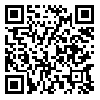Sun, May 25, 2025
[Archive]
Volume 4, Issue 1 (2-2024)
APSS 2024, 4(1): 1-10 |
Back to browse issues page
Download citation:
BibTeX | RIS | EndNote | Medlars | ProCite | Reference Manager | RefWorks
Send citation to:



BibTeX | RIS | EndNote | Medlars | ProCite | Reference Manager | RefWorks
Send citation to:
faraji Z, shamsi majelan A, daneshmandi H. Epidemiology and Associated Factors of Sports Injuries in Iranian Goalball Athletes. APSS 2024; 4 (1) :1-10
URL: http://apssjournal.com/article-1-99-en.html
URL: http://apssjournal.com/article-1-99-en.html
1- Master's student, Department of sport injury and corrective exercise, Faculty of physical education and sports sciences, University of Guilan, Rasht, Iran.
2- Associate Professor, Department of sport injury and corrective exercise, Faculty of physical education and sports sciences, University of Guilan, Rasht, Iran. ,shamsi@guilan.ac.ir
3- Associate Professor, Department of sport injury and corrective exercise, Faculty of physical education and sports sciences, University of Guilan, Rasht, Iran.
2- Associate Professor, Department of sport injury and corrective exercise, Faculty of physical education and sports sciences, University of Guilan, Rasht, Iran. ,
3- Associate Professor, Department of sport injury and corrective exercise, Faculty of physical education and sports sciences, University of Guilan, Rasht, Iran.
Abstract: (72 Views)
Visually impaired individuals have higher risk of injuries particularly in sports like goalball. It is specifically designed for the visually impaired people. It is imperative to prevent injuries prior to their occurrence for avoiding negative effects on sporting success, financial losses, and motivation. This study was aimed to determin the Epidemiology and Associated Factors of Sports Injuries in Iranian Goalball Athletes.
This study is a descriptive-correlational and retrospective research. A total of 205 male and female goalball athletes, aged between 18 and 50 years, completed the injury registration form. The Fuller et al. injury registration form was utilized for data collection. The information gathered included injury prevalence, injury mechanisms, injury severity, injury incidence across different anatomical regions, injury timing (training/competition), and injury type (acute or chronic). Frequency and percentage were used to assess injury prevalence, and the Chi-square test was employed to analyze relationships between variables.
The highest prevalence of injuries was related to contusions and bruises (28.3%), while fractures and dislocations had the lowest prevalence (3.9%). No significant relationship was found between sports injury prevalence and factors such as age group, activity history, activity level, and sports class. The knee exhibited the highest frequency of local and overall anatomical injuries (19.5%), while the sole of the foot had the lowest frequency (1.0%). The most common types of injuries were facial and cheek abrasions, cuts, and wounds (8.3%), followed by wrist and shoulder muscle strains, each affecting 15 athletes (7.3%). Regarding injury mechanisms, the most frequent cause was ball impact with the athlete (34.2%), while the least common mechanism was player collision with the goalpost (5.2%). A significant correlation was found between injury mechanism and activity level (p = 0.031). The most frequent injury severity category was "very mild" (31.2%, affecting 114 athletes), whereas "very severe" injuries had the lowest frequency (10.7%, affecting 39 athletes). A significant positive correlation was observed between injury severity and activity level (p = 0.02).
Based on the findings and the significance of the issue, injury prevention must be prioritized to reduce the occurrence of injuries. Consequently, coaches, athletes, and other stakeholders should collaborate to lower injury rates by incorporating sports injury prevention programs.
This study is a descriptive-correlational and retrospective research. A total of 205 male and female goalball athletes, aged between 18 and 50 years, completed the injury registration form. The Fuller et al. injury registration form was utilized for data collection. The information gathered included injury prevalence, injury mechanisms, injury severity, injury incidence across different anatomical regions, injury timing (training/competition), and injury type (acute or chronic). Frequency and percentage were used to assess injury prevalence, and the Chi-square test was employed to analyze relationships between variables.
The highest prevalence of injuries was related to contusions and bruises (28.3%), while fractures and dislocations had the lowest prevalence (3.9%). No significant relationship was found between sports injury prevalence and factors such as age group, activity history, activity level, and sports class. The knee exhibited the highest frequency of local and overall anatomical injuries (19.5%), while the sole of the foot had the lowest frequency (1.0%). The most common types of injuries were facial and cheek abrasions, cuts, and wounds (8.3%), followed by wrist and shoulder muscle strains, each affecting 15 athletes (7.3%). Regarding injury mechanisms, the most frequent cause was ball impact with the athlete (34.2%), while the least common mechanism was player collision with the goalpost (5.2%). A significant correlation was found between injury mechanism and activity level (p = 0.031). The most frequent injury severity category was "very mild" (31.2%, affecting 114 athletes), whereas "very severe" injuries had the lowest frequency (10.7%, affecting 39 athletes). A significant positive correlation was observed between injury severity and activity level (p = 0.02).
Based on the findings and the significance of the issue, injury prevention must be prioritized to reduce the occurrence of injuries. Consequently, coaches, athletes, and other stakeholders should collaborate to lower injury rates by incorporating sports injury prevention programs.
Type of Study: Original Article |
Subject:
Motor behavior
Received: 2025/03/4 | Accepted: 2025/03/5 | Published: 2024/02/29
Received: 2025/03/4 | Accepted: 2025/03/5 | Published: 2024/02/29
Send email to the article author
| Rights and permissions | |
 |
This work is licensed under a Creative Commons Attribution-NonCommercial 4.0 International License. |




